Data Watch:
How to Prevent Cyber Attacks in Healthcare Settings
Deryck Mitchelson
Case Study:
Devon Training
Hub Chooses BSA for Seventh Consecutive Year!
Eye on Healthcare:
Autism: Later-life
Diagnosis Doesn’t Mean Lower Quality of Life
Mental Health:
Be Kind to Your Mind

Blue Stream Academy’s Healthcare & Lifestyle Magazine Summer 2023 | Issue 17
Today BSA
In This Issue
IN EVERY ISSUE
A Spotlight On... Evacuation Chairs
In our ‘Spotlight On…’ series, we give readers a closer look at some of Blue Stream Academy’s interactive training modules. In this issue, our content developer Lauren Spencer shines a light on Evacuation Chairs.

Data Watch: How to Prevent Cyber Attacks in Healthcare Settings

Deryck Mitchelson, Chief Information Security Officer at Check Point Software Technologies, sets out 10 of the best ways to prevent cyber attacks in healthcare settings.

Food, Glorious Food
Looking for some tasty summertime treats? Check out our mouthwatering recipes for an easy BBQ chicken salad and a no-bake key lime cheesecake!

Blue Stream News
Now we’ve reached the height of summer, we recap the last few months at Blue Stream HQ and talk news and events with #TeamBSA.
LiveChat Lounge
We check in with Blue Stream Academy’s friendly support team to answer a customer’s question about our paperless Care Certificate solution.
FEATURES
6
Eye on Healthcare
13
Showcasing cutting-edge academic content from The Conversation, we keep you up to date with hot topics from across health and social care, written by professionals who share a passion for reporting on the issues that matter most. In this issue, we share recent research on the connection between autism and quality of life.
10 13
Devon Training Hub Chooses Blue Stream Academy for Seventh Consecutive Year
20
Be Kind to Your Mind
22
It’s no secret that health and care professionals are experiencing high levels of work-related stress, unfortunately in all areas of the sector. Our marketing assistant Caitlin Wood has compiled some simple but effective techniques to help you to be kind to your mind.

23
16
AUGUST 2023 | 17
02 6
10
20
4
Seven years ago, Devon Training Hub started looking for a reliable and secure solution for their training and compliance needs. Find out how they and their users are benefiting from BSA’s market-leading GP eLearning Suite. 16
Relax this summer knowing that your team is up to date on their Care Quality Commission (CQC) requirements by joining TeamBSA!
We‘re offering all new organisational subscribers 3 months’ free usage!
Simply register before 30 September 2023 to take advantage of the extra subscription on us!
You read that right – 15 months’ usage for the price of 12!
Get in touch with our account managers today: info@bluestreamacademy.com
Four years of BSA Today – where has the time gone? Since launching in 2018, BSA Today has gone from strength to strength, and we’re proud to have had you by our side every step of the way.
Here at Blue Stream HQ the team has been busy preparing for an exciting change, and the time has finally come to share this with you.
Firstly, let me introduce myself – my name is Abi, and I’ve been the Events and Marketing Manager here at Blue Stream Academy for 6 years now. Our founding editor, Brady Braddock, has moved on to a new venture, and having worked closely alongside Brady since the first issue was published, I’m excited to continue developing BSA Today as the new editor and and bring you even more insightful articles on health and social care.
We’ve started by making the magazine more sustainable by going fully digital. Take a look inside to find out what else we’ve been up to!
Happy reading,
Abi Bowler, BSA Today Editor
Our Team
EDITORIAL
Abi Bowler | Editor
Alex Burnell | Content Development
Stuart Walsh | Information Security
ART & DESIGN Courteney Barlow-Ferguson | Graphic Designer
COMMUNICATIONS
Abi Bowler | Marketing & Media
Caitlin Wood | Marketing Assistant

THIS ISSUE’S CONTRIBUTORS
Deryk Mitchelson | Florence Leung
Lucy Anne Livingston | Punit Shah
Disclaimer: The
©
Abi x
views and opinions expressed within this publication are those of the original content authors and do not necessarily reflect the official views and opinions of Blue Stream Academy Ltd.
bluestreamacademy.com 03
2023 Blue Stream Academy
Eye on Healthcare Autism: Later-life Diagnosis Doesn’t Mean Lower Quality of Life – New Research
Florence Leung | Postdoctoral Research Assistant, University of Bath
Lucy Anne Livingston | Lecturer in Psychology, King’s College London Punit Shah | Associate Professor of Psychology, University of Bath
A growing number of people are discovering that they are autistic in adulthood. This is especially the case among women, with a number of celebrities – such as model and reality star Christine McGuinness and TV presenter Melanie Sykes – sharing their experiences of being diagnosed as an adult.
Having an autism diagnosis in adulthood can have benefits, but it has left some wondering what life would have been like if they’d found out earlier. In our latest study, we investigated whether getting a diagnosis at a younger age is linked to a better quality of life as an adult.
We found no link between the age people received a diagnosis and how they felt about their lives.
To conduct our study, we asked 300 autistic adults to report the age at which they learned they were autistic and detailed information about their backgrounds, including their age, sex, ethnicity, relationship status, income, education level and whether they had any mental health conditions. Recording these details was crucial as all are linked to quality of life
We also measured participants’ selfreported level of autistic personality
traits. Approximately 43% of participants were male, and around 90% of participants were white. Around half of the people in our sample learned they were autistic as a child, while the other half found out as adults.

Participants then rated how they felt about their lives by answering questions based on the World Health Organization’s quality of life scale. Some of the questions they were asked included: “To what extent do you feel your life to be meaningful?” And: “How satisfied are you with the support you get from your friends?”
Our results confirmed that the age a participant was diagnosed or became aware of being autistic (if they were diagnosed very young and told later by their parent) was not linked to their quality of life as an adult. This was true when the influence of other factors was considered in our analysis.
Our research also brought up an unexpected finding. Autistic women, after accounting for age, reported a better quality of life than
with
with
04
Our research suggests the age people find out they’re autistic does not necessarily impact their quality of life afterward
men overall. We aren’t sure what might explain this finding, so it will be important for future studies to investigate this difference.
While in recent years there’s been a much-needed growth in research investigating mental health in autistic women, this finding suggests we must not overlook the needs of autistic men who might be struggling with their mental health.

Our study also provided further support for the link between autism and poor mental health
Autistic people who had other conditions, such as ADHD, anxiety or depression, reported a much lower quality of life than those who had none. These results reinforce the need for more targeted, personalised support to improve autistic people’s mental health and quality of life.

Our findings also reflect a fundamental shift that’s required in autism research. For a long time, autism was thought about as a childhood condition. Many people still think this way. What people
may not realise is that most autistic people in the UK, for example, are adults
With an ageing society, this pattern may increase over the next few decades. As such, it’s important to improve awareness that autism isn’t just a childhood condition. This will ensure that both research and practical support receive proportionate funding, which has historically been lacking for autistic adults. It may also help more people to get the support they need.
It will also be vital for future research to focus on highlighting the strengths that autistic adults may have, as well as looking at the difficulties they may face. This will help identify the best ways to support autistic people throughout their lives and move beyond a onesize-fits-all approach to care
The original article can be found at: https://theconversation.com/autism-later-lifediagnosis-doesnt-mean-lower-quality-of-lifenew-research-207950
bluestreamacademy.com 05
We found no link between the age people found out and how they felt about their lives
A Spotlight On... Evacuation Chairs
 Lauren Spencer | Content Developer at Blue Stream Academy
Lauren Spencer | Content Developer at Blue Stream Academy

If there was an emergency at your workplace and you had to evacuate the building, how would you get everyone out? If it wasn’t safe to use the lift – such as in a fire – would everyone in the building have a means of escape, including people with mobility issues?

Evacuation chairs give you another way to get people out of the building in an emergency. Understanding how to use them and who they are for makes workplaces safer and could save lives.
What Is an Evacuation Chair?
An evacuation chair is used to transport a person with mobility issues out of a building in an emergency. Evacuation chairs are specially designed to navigate stairs, because in some types of emergencies it wouldn’t be safe to use the lift.
Most evacuation chairs are lightweight but sturdy. They usually have a caterpillar track to allow the chair to get down flights of stairs without being lifted, and wheels
that make it easier to travel on level ground. They tend to be foldable and are normally kept in or near a fire refuge point.
Various types of evacuation chairs made by different manufacturers are available. For example, some are designed to support heavier loads, and others can navigate narrow or spiral staircases. Some have power assistance so the chair can move a person upstairs, but most are manually operated and are designed for transporting people downstairs.
Who Might Need to Use an Evacuation Chair?
Evacuation chairs can be used by staff, visitors and members of the public who might otherwise find it difficult to leave the building in
an emergency because of mobility issues. This may include people who:
• have a mobility impairment
• are heavily pregnant
• are older
• are injured
• have a mental health condition that affects their ability to move independently.
There may also be other reasons that someone might need to leave a building with the assistance of an evacuation chair.
Equally, not everyone in the groups listed above will need or want to use an evacuation chair – some will be confident that they can exit the building unaided.
06
Is an Evacuation Chair Right for Everyone?
An evacuation chair might not be suitable for every person who has a mobility issue. If someone has a complex health issue or disability, using an evacuation chair could be uncomfortable or injure them.
Some people might not be able to transfer into an evacuation chair or stay in a comfortable position once they are seated.
Does Your Organisation Need an Evacuation Chair?
Having an evacuation chair is not a legal requirement for any workplace, but the Regulatory Reform (Fire Safety) Order 2005 states that in the event of danger, people must be able to leave the premises as quickly and safely as possible.

With that in mind, having at least one evacuation chair on site will help organisations to fulfil their responsibilities under the Order.
Think about your workplace:
• Does the building have stairs that staff and visitors regularly need to use?
• Are there people in the building who have mobility issues and might need help to get out in an emergency?
• Is your workplace a residential facility for people who are older and who may be frail?
• Is it open to members of the public, who may have varying mobility needs?

A risk assessment should consider all these questions. It should identify people who would be especially at risk in an emergency and whether they would need to use an evacuation chair to escape the building. This should be set out in an evacuation plan.
Who Can Operate an Evacuation Chair?
If you need an evacuation chair for your workplace, you’ll also need someone to operate it. This can be any employee or volunteer who is physically fit and has no back, leg or arm injuries.
Many evacuation chairs are advertised as only needing one person to operate them, but it’s generally recommended that a second person is available to assist with evacuations; this is safer for the main operator and for the person in the chair.
Evacuation chair operators and assistants must be able to stay calm in an emergency and provide reassurance to the person who is in the chair.
Anyone who is involved in operating an evacuation chair will need some practical training so they understand how to use their evacuation chair safely and correctly.
Continued on page 08 bluestreamacademy.com 07
Continued from page 07
How Do Evacuation Chairs Work?
Several different manufacturers make evacuation chairs, and different models have different functions and features, so the way each type of chair works is likely to differ slightly.
However, many evacuation chairs that are used for transporting people downstairs work in a similar way; most are manually controlled and need one or two people to operate them.
First, the chair has to be carefully unfolded. The operator then locks the frame into place and holds the chair securely while the person transfers into it. The person might need help from a carer to do this, who should follow the organisation’s guidance on manual handling.



Next, restraints are fastened to keep the person secure so they won’t fall out while the chair is moving.
When the person is secure and comfortable, they can be transported down the stairs. The operators guide the chair down the stairs. The chair’s rubber caterpillar tracks create friction as they slide down the stair nosings (the edges of each step), which slows down the descent so the operators can move the chair in a safe and controlled way.

Once the stairs have been navigated and the ground floor is reached, the person seated in the chair can be moved to a safe place, such as the fire assembly point.
Because so many different evacuation chairs are available, it’s vital that anyone who is responsible for operating one undertakes practical training and follows the instruction manual for the make and model used in their workplace
Want to Find Out More?
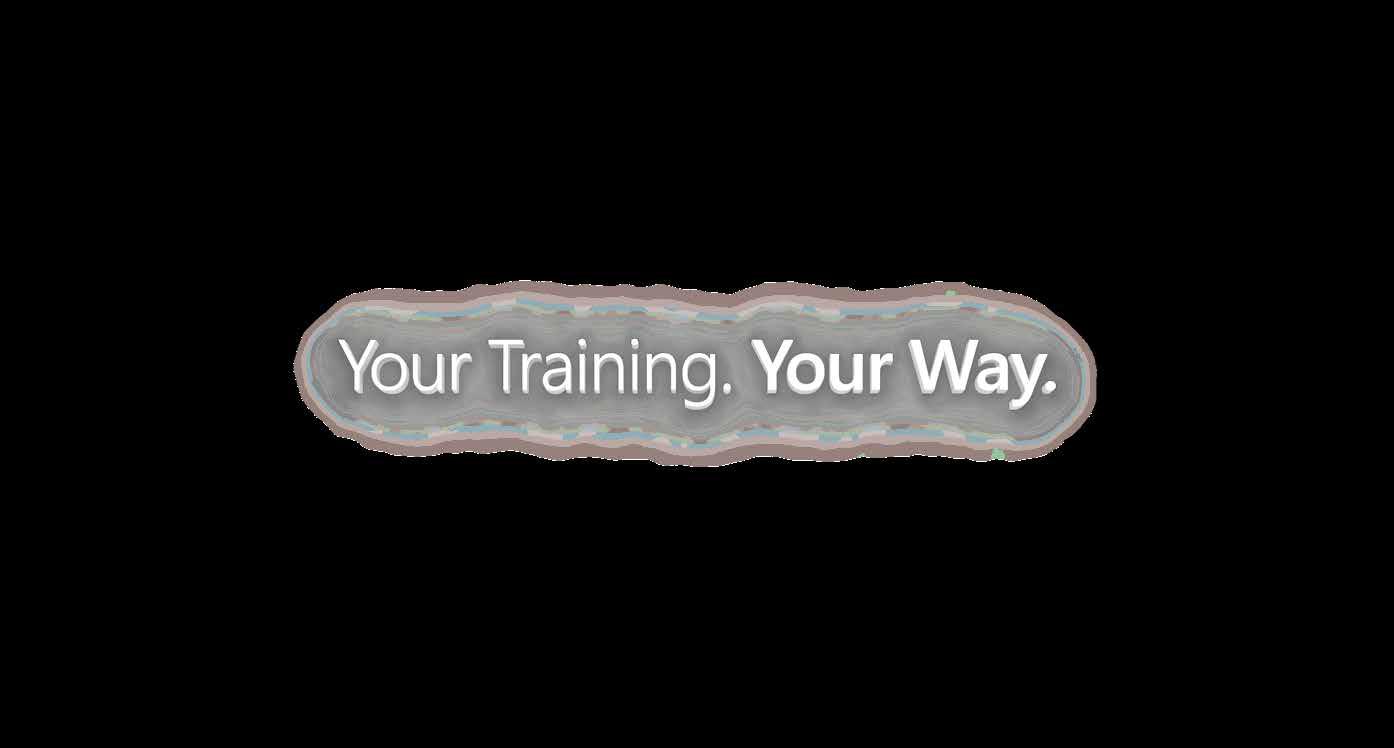
If you would like to enhance your or your team’s knowledge about evactuation chairs and how to use them, please phone us on 01773 822549 or use our website’s LiveChat feature at bluestreamacademy.com You can also email info@bluestreamacademy.com

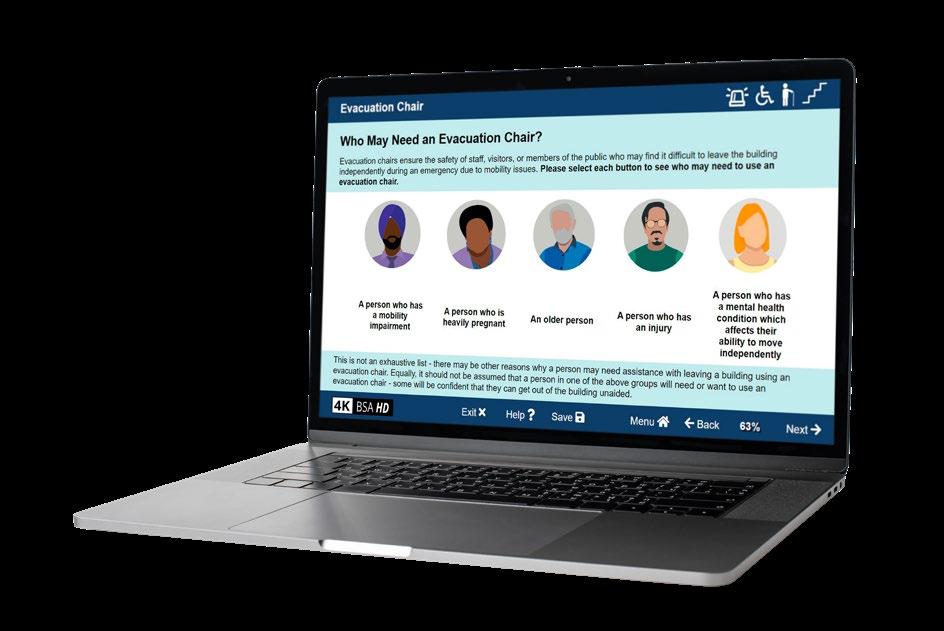

08
1 2 3
Empower your people and optimise person-centred care
eLearning • Full Management System
Join over a quarter of a million forward thinking trainees...

▪ 120+ CPD-certified eLearning modules


▪ Straightforward HR, rota, performance, and absence management

▪ Multidisciplinary friendly forum
...and connect with over 5,000 other organisations in the BSA Family.
▪ Automated training, development, and policy reporting
▪ Secure staff data and compliance recording

▪ Precise policy and procedure monitoring

NEW LIBRARY CONTENT
Devon Training Hub
Chooses Blue Stream Academy for Seventh Consecutive Year
Customer Snapshot
What is Devon Training Hub?

Devon Training Hub is an organisation dedicated to delivering high-quality training, education, and development for primary care staff across Devon.
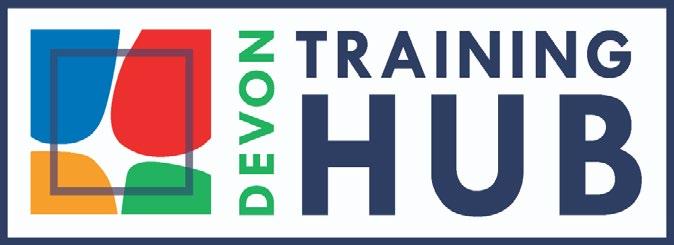
It is partly commissioned by Health Education England and is run by Primary Care in Devon. It is aligned to the four Primary Care Collaborative Boards across Devon –North, South, East and West – which together form Devon Collaborative Board. Devon Training Hub also works with numerous stakeholders, including panDevon practice managers and Public Health.
For more information about Devon Training Hub, visit: www.devontraininghub.co.uk
Problem

Devon Training Hub approached us in their search for a training and compliance solution that would help them track staff course completions, monitor training and compliance progress, and improve their data security.

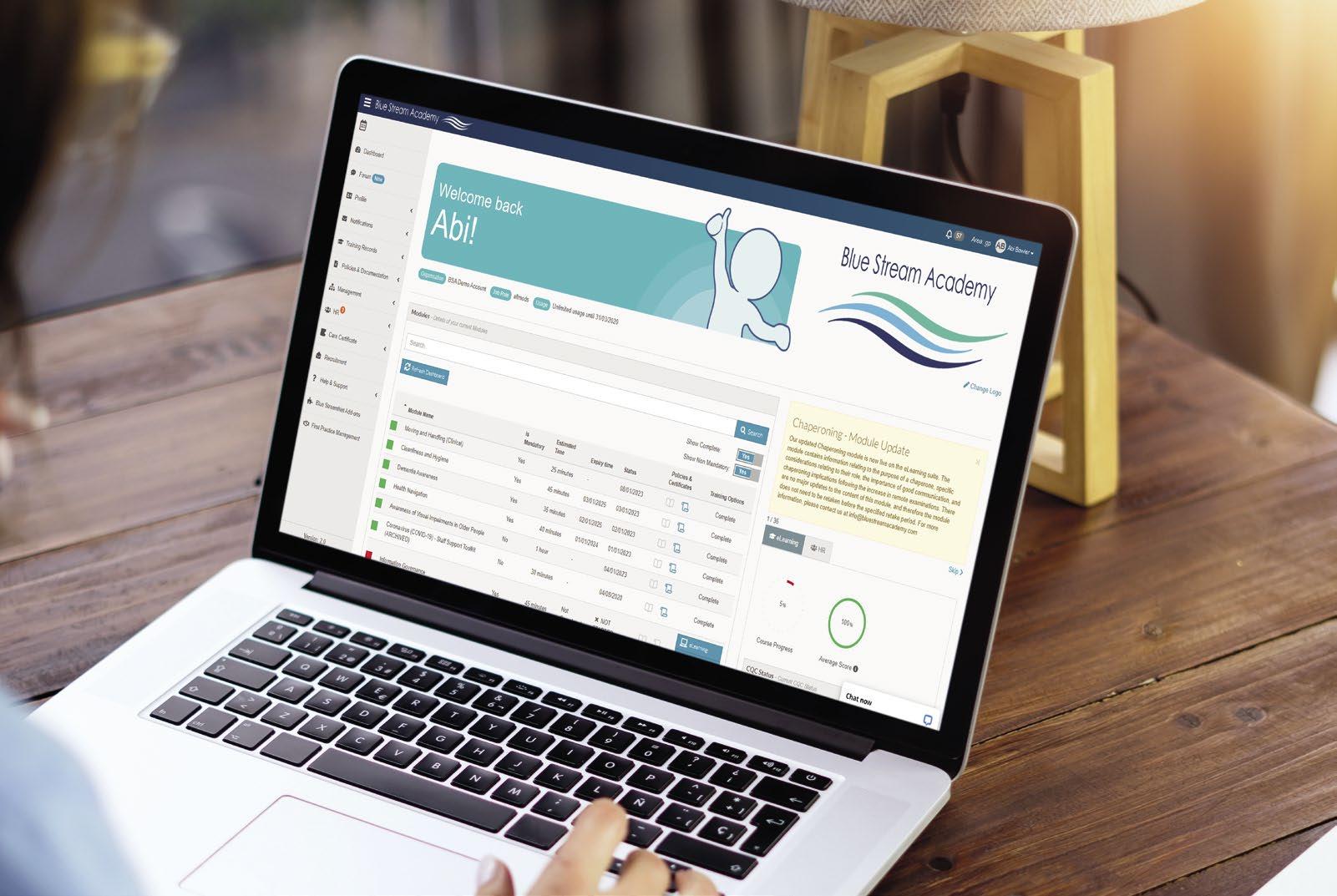
With limited Care Quality Commission (CQC) reporting options available, and wanting to move away from a manual approach to training and compliance, Devon Training Hub identified the requirement for a new solution, and support with the administration involved in implementing it.
With limited options on the market, Devon Training Hub started looking for a reliable and secure solution. They began collaborating with us on their training journey in 2017.

Sector Products
Population covered GP practices Active users Course completions
completed module Favourite BSA report
Training Hub Primary Care GP eLearning library, Management of Information System (MIS), Blue People HR System, Blue Voice Discussion Forum, Blue Connect Diary and Video-conferencing System, Blue Recruit Vacancy Advertisement System 1.2 million 121 1,450+ 315,000+ Fire Safety (16,000 completions) Compliance Report 10
Organisation
used
Top
Devon
Everything is in one place with an easy-to-read dashboard and the ability to download reports from the system for governance meetings.

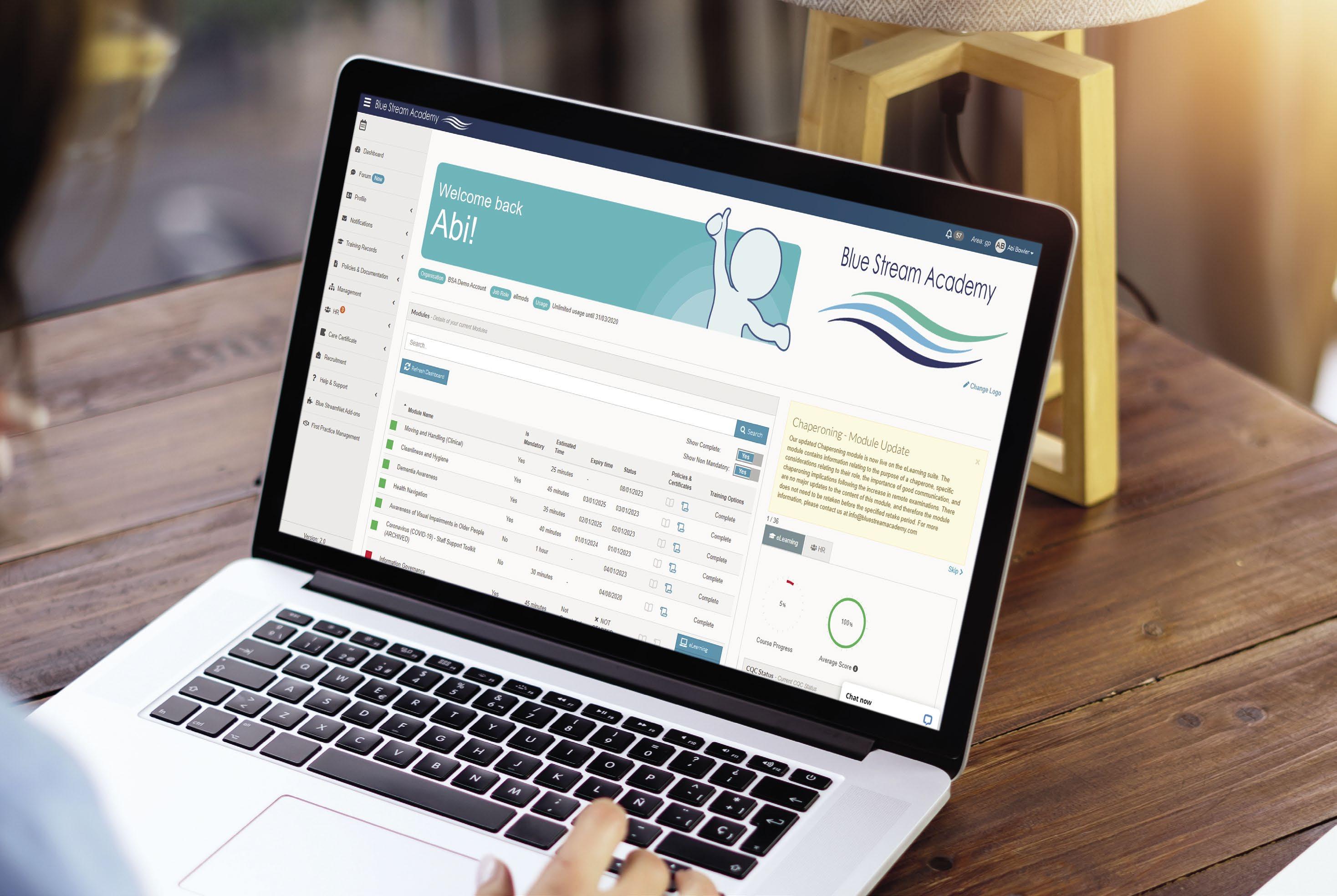
 Roland Gude Strategic Director, Devon Training Hub
Roland Gude Strategic Director, Devon Training Hub
Solution
After an initial discussion with the team at Devon Training Hub, we designed a painless transition process for them. We ensured that each practice in the group was populated with its own trainee profiles and any previously completed training. This preparation was a pivotal step in the transitional journey, as it made sure that every member of staff in the locality could log in and seamlessly continue with their professional development. The data provided by Devon Training Hub automatically populated the practices’ and localities’ training reports, providing an instant, live snapshot of progression towards compliance.
Results











Devon Training Hub has saved an estimated £50,000 since transitioning to Blue Stream Academy in 2017. By implementing the GP eLearning solution, the hub has been able to save days of staff time every year.
Devon Training Hub has also improved its training efficiency by switching to a blended training approach, saving time as well as money by increasing eLearning use. In an average month, Devon Training Hub users complete 4880 modules* (approximately 6100 hours** of training) between them. Each year, they average 58,000 course completions* – or about 72,500 hours** of training!
With an average of 40 course completions per trainee each year, it’s clear to see that Devon Training Hub users are benefiting from our market-leading GP eLearning Suite.


Roland Gude, Strategic Director at Devon Training Hub, says: “We have worked with Blue Stream for seven years in Devon and standardised mandatory training across the whole of general practice. We have found them to be responsive to the changing face of the NHS and proactive in developing new modules with us.”

So, what are you waiting for?
Get in touch with our International Accounts Manager, Natalie, to find out how you can join Devon Training Hub and over a ¼ of a million trainees benefiting from working with Blue Stream Academy!
gp@bluestreamacademy.com

822549 Data correct as of 9 June 2023. Data based on the period June 2022 – May 2023. **Based on an average module length of 75 minutes (1 hour and 15 minutes). About
58,000
1.2
01773
£50,000 saved since 2017
module completions per year
72,500
hours of training per year
1,450+
active users across Devon
million in the population covered
bluestreamacademy.com 11
121 GP Practices across Devon
31 Primary Care Networks across Devon
Brilliant, so good to get a real person responding and so quick too.
BSA Customer Support





We’ve Got Your Back!
Sorted perfectly with zero fuss!
Supportive and amazing! It was very quick and was a simple solution.
Simple, quick and straight to the point!
Blue Stream Academy is proud to support over ¼ million of our trainees with outstanding customer service, delivered daily by our dedicated in-house support team. Each year, our support specialists handle over 100,000 enquiries, resolving over 95% of these within 24 hours of initial contact.
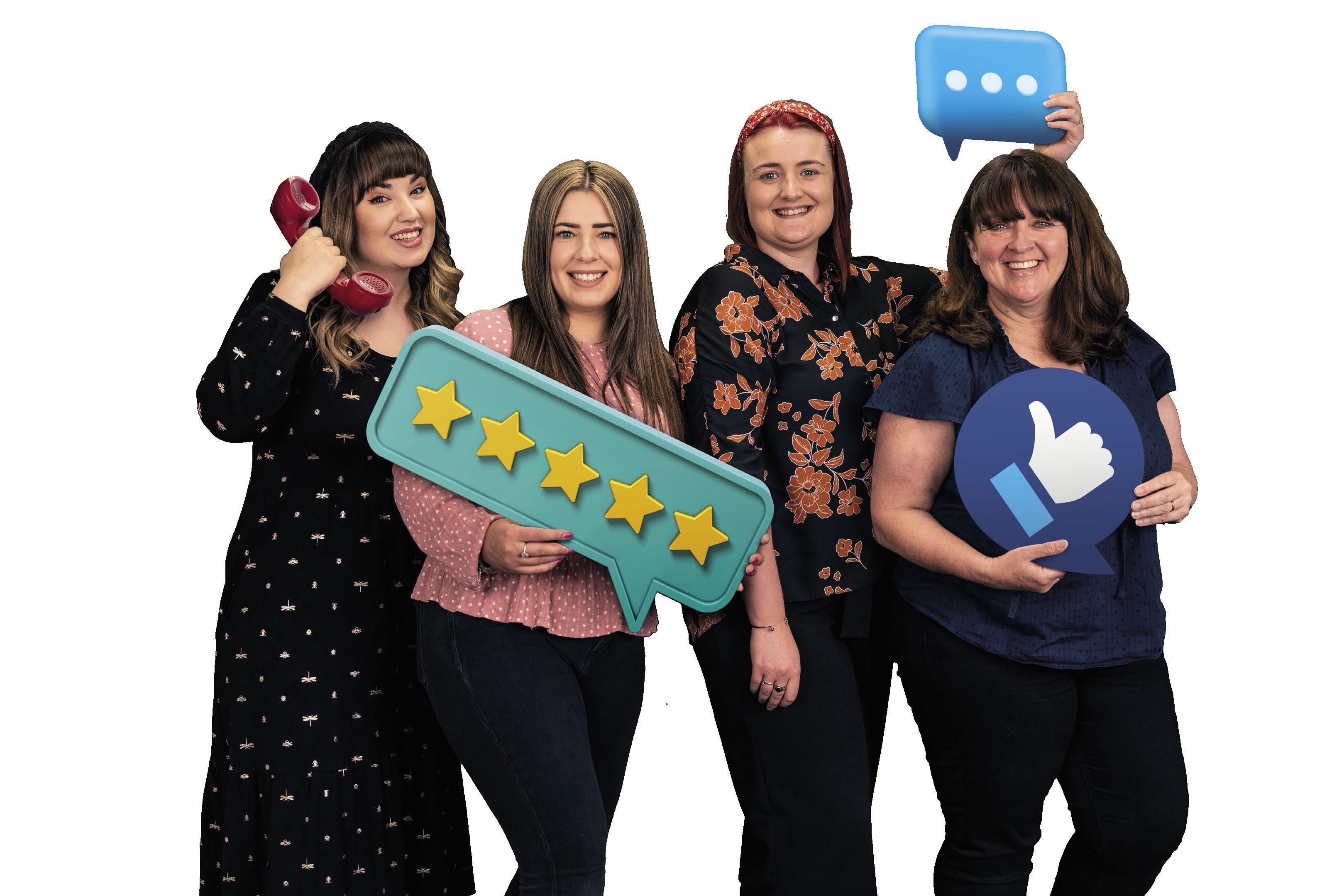
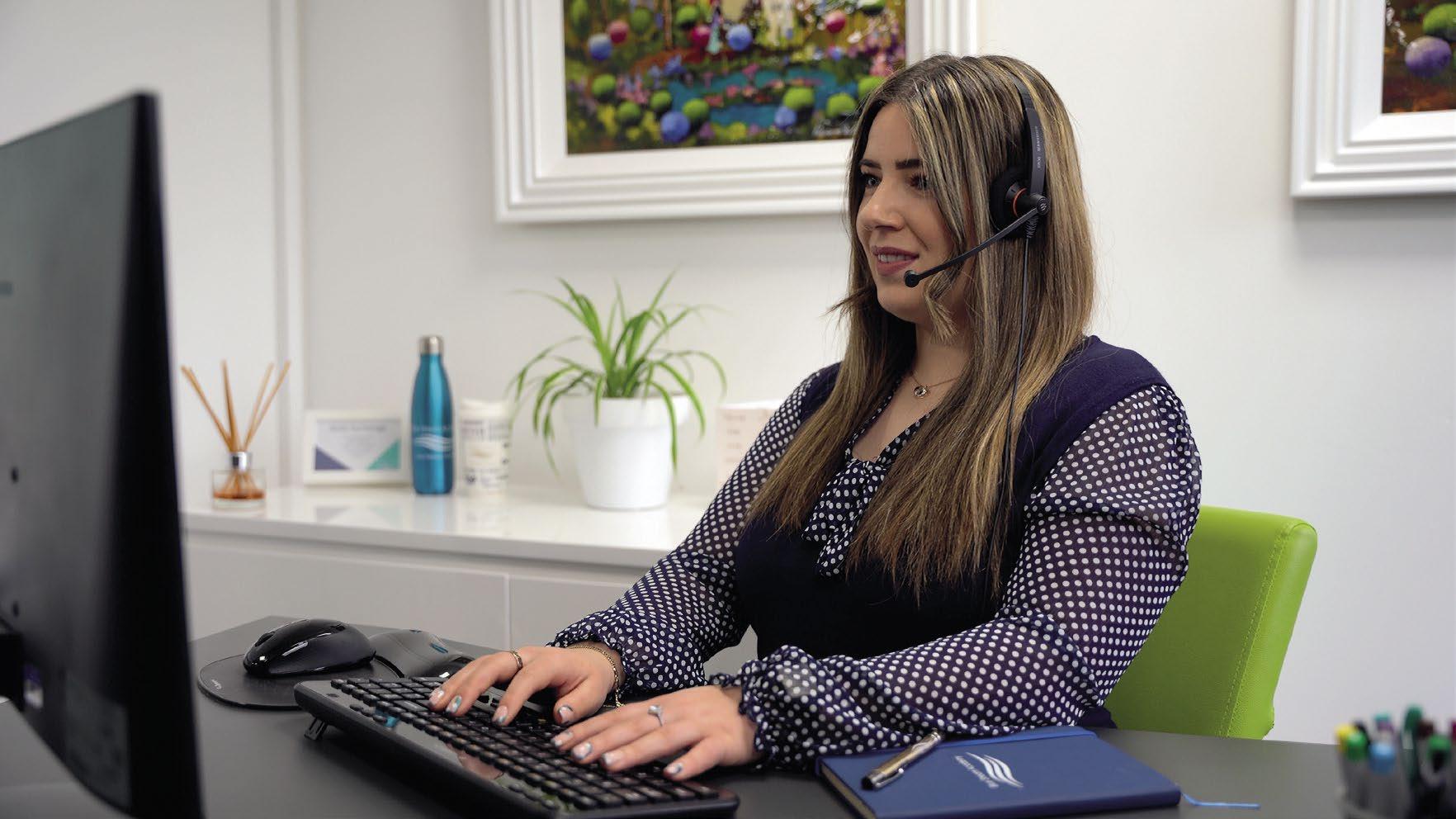
As always issue sorted in no time. Many thanks!
Really helpful and able to answer all my queries with very quick responses.

Here at BSA HQ, we understand that health and care professionals up and down the country are facing unprecedented pressures. That's why our team is always at your service, whether you have a quick question or an urgent query.
Brilliant. I’ll use it again if I need to because it was really easy to do, and the person I spoke to was so helpful.
We’re Here for You!
Whether you're getting in touch over the phone, via email or through our LiveChat service on our website, TeamBSA are available to lend a helping hand.




Our support team are system specialists, so if you have a system query, no matter how big or small, they'll be happy to assist you from Monday to Friday, 09:00-17:30 via:


01773 822549 info@bluestreamacademy.com LiveChat via our homepage
Brilliant service 10 out of 10.
10 Best Practices: How to Prevent Cyber Attacks in Healthcare Settings
Deryck Mitchelson | Field CISO EMEA at Check Point Software Technologies

Historically, healthcare organisations have represented high-risk cyber attack targets, resulting in withering large-scale security interruptions. Breaches have exposed private information belonging to millions of people, and attacks have been known to cause physical harm. In the remainder of 2023, we’re poised to see a continuation of past trends.


However, a seismic shift is happening in the healthcare space. Cyber security is becoming a core tenet within the patient-centred care model, as cyber security aligns with patient-centred provider goals. Care must be of high quality, and must meet patient satisfaction scores; neither of which are possible in the absence of cyber security. Leaders are beginning to take this seriously.
When thinking in terms of patient-centred provider care goals, cyber security needs to command the space that it occupies. Cyber security needs to be the best that it can be. As a healthcare security professional or decision-maker in the process of rethinking how to prevent cyber attacks in the healthcare setting, consider the following attack prevention strategies.
How to Prevent Cyber Attacks in Healthcare Settings
1. Implement Role-based Access Controls
Access grouping and access granularity is appealing in healthcare environments, as it allows for users to maintain discretionary capabilities over his/her own objects and yet also permits organisational administrators to set up and oversee rules.
While role-based access may need to be refined as new realities present themselves (emergency situations or other unpredictable scenarios), syntheses of international literature on the topic show that role-based access controls broadly increase patient privacy, security and regulatory compliance capabilities.

Continued on page 14 13
2. High-level Buy-in
Organisations that are in the process of cultural changes around cyber security need to ensure a ‘positive tone’ from the top. Research shows that when communications pertaining to the values of risk management and cyber security come from the top, principles are adhered to more closely than when simply communicated from the desk of a cyber security professional.
3. Provide Healthcare Staff with Education
Assess existing levels of privacy and data security awareness (ex. through surveys) and subsequently plan training opportunities for both clinical and non-clinical staff. As the security landscape changes, ensure that front-line staff members are given further insight into possible security issues and prevention techniques.

4. Assess Patch Management and Vulnerabilities
Cyber criminals have a habit of targeting unpatched or otherwise unaddressed vulnerabilities within systems. Technological advances enable cyber criminals to scan systems for weaknesses, which then receive prompt attention from the hackers. As a result, patching must occur across systems at regular intervals and security managers should take care to routinely assess weak points.
5. Bring in Ethical Hacking Services
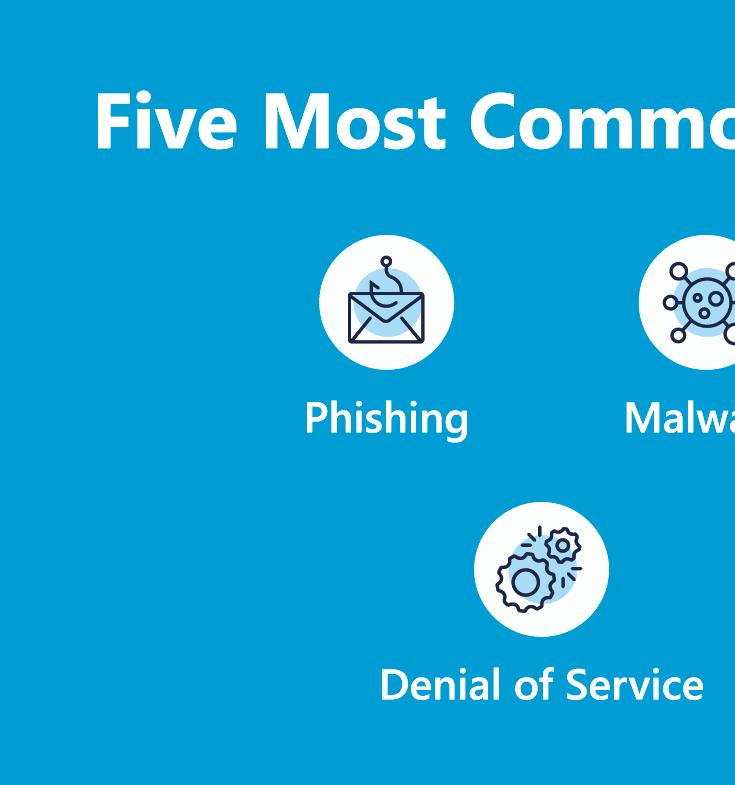
Along planned intervals and with the direct support of relevant departments, invite ethical hackers to attempt to breach your systems. In the event that the ethical hackers manage to break through, you have precise insights into what policies, processes, tools or devices require further security attention.
When inviting ethical hackers to assist, get to know who you are working with and gather as much information from them as possible. Ensure that any hired ethical hackers can provide details concerning the tools used, issues found, and how to resolve them.
6. Build Backup Repositories
Although getting all of the components into place can prove time-consuming, the best way to limit potential cyber attack damage is through the development of robust data backup systems. Automated, regulatory compliant cloud-based backup services can provide reliable and safe options, even for organisations that maintain vast volumes of data. They can also offer instant monitoring, which can help organisations report on problems that may necessitate intervention.
For data redundancy purposes, data should be stored in at least two disparate locations; one of which should be in an offline and immutable locale. Consider maintaining at least three copies of current data. Apply data backup infrastructure safeguards; from complex security algorithms that can guard data integrity, to geofencing, to tamper-proof logging. Conversely, also consider applying additional layers of protection that can allow for the deletion of backups if access credentials are unexpectedly compromised.
7. Instant Recovery
Healthcare management groups and organisations can’t afford downtime. Ensure that your healthcare organisation can recover from a disaster in minutes. An increasingly popular option is to purchase Disaster
Continued from page 13 14
Recovery-as-a-Service (DRaaS). This can pivot disaster recovery from an operating expense into a capital expense. Disaster Recovery-as-a-Service also means that your staff is not solely responsible for spinning up systems.
Regardless of how you plan for disaster recovery, test your disaster response plans on a routine basis. In the event of a ransomware attack for example, it’s best to be able to rely on an at-the-ready squadron of backups, policies, procedures, and trusted experts.
8. Multi-factor Authentication (MFA)
Despite the simplicity inherent in the method, multifactor authentication represents a key methodology if concerned with how to prevent cyber attacks in healthcare settings. Multi-factor authentication offers a series of layered protections to strategically guard networks and accounts.
Microsoft researchers have found that multi-factor authentication can block nearly all automated cyber attacks on its platforms. It also reduces the risk associated with compromised credentials. Multi-factor authentication implementation represents a cyber security best practice.
9. Protect Mobile Devices
Whether your system’s mobile devices consist of Lenovo Tablets, or items like infusion pumps and respirators, determine how you can minimise and protect your IoT/IoMT attack surface. Prevent malicious IoT/IoMT traffic using deep device visibility, risk analysis, zero-trust segmentation, threat intelligence, security
gateways, and specialised healthcare-focused cyber security services. For further insights on this topic, see Check Point Software’s Buyer’s Guide to IoMT security
10.
Choose a Reputable Cyber Security Vendor
Your cyber security vendor can serve as a partner throughout your security maturation journey. In conjunction with a cyber security vendor, your organisation will be able to create a formidable cyber defence strategy that’s capable of preventing and detecting the most persistent, sophisticated and advanced cyber security threats.
Closing Thoughts
Empathy in healthcare is not relegated to bedside interactions. Empathetic security leaders and decision-makers can improve care experiences through technology.
A close focus on cyber security in healthcare signals empathy. Patients commonly feel vulnerable due to their personal circumstances. With best-inclass cyber security, organisations can figuratively, representationally, and literally reduce vulnerability
For more information about how to prevent cyber attacks in healthcare settings, please see CyberTalk.org’s past coverage. For more insights from cyber security expert Deryck Mitchelson, please see Advancing Security with the MITRE ATT&CK framework
The original article can be found at: https://www.cybertalk.org/2022/06/21/10-best-practices-how-to-preventcyber-attacks-in-healthcare-settings/
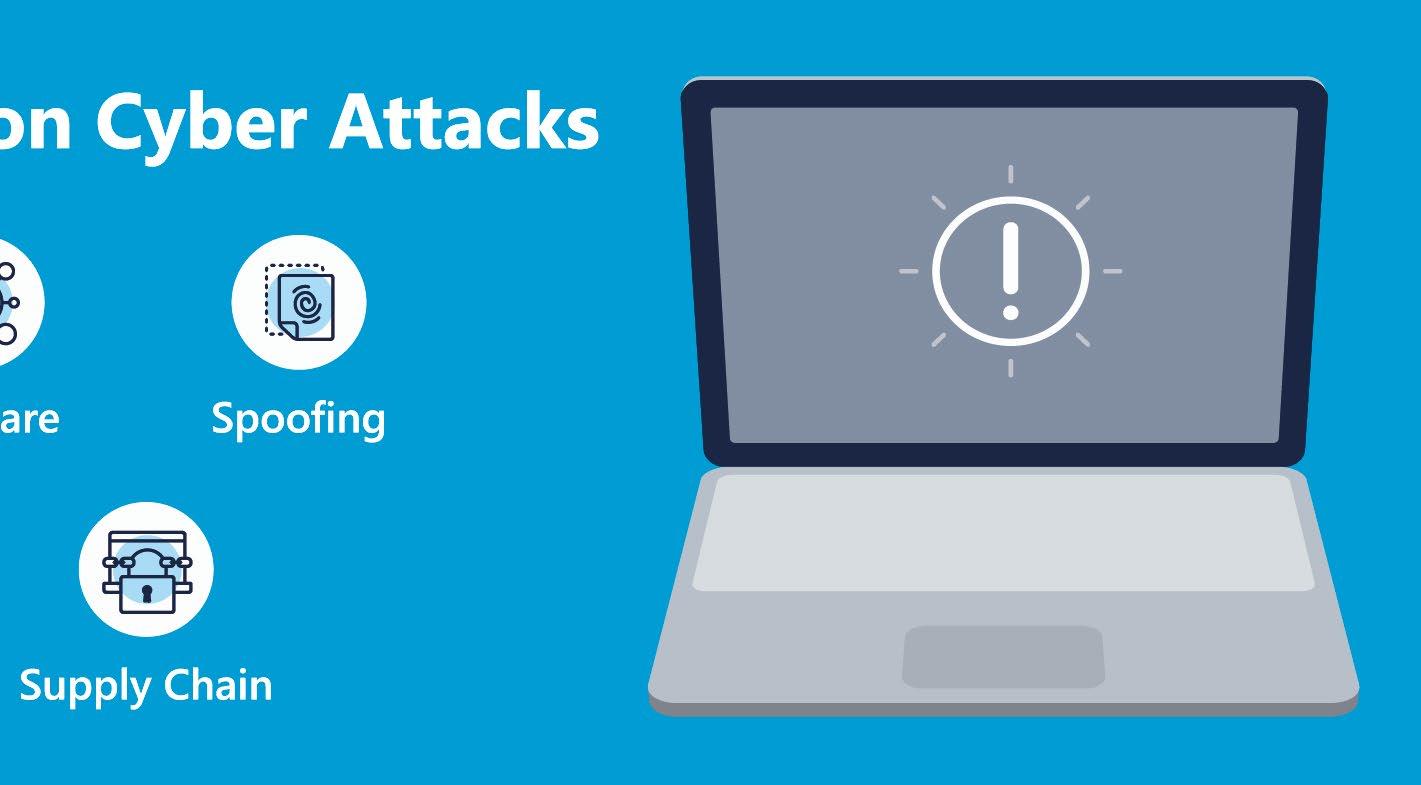
bluestreamacademy.com 15
Be Kind to Your Mind
Caitlin Wood | Marketing Assistant at Blue Stream Academy

It’s no secret that health and care professionals are experiencing high levels of work-related stress. Unfortunately, people are feeling the effects in all sectors, whether it’s in the form of staff shortages, lack of support, or poorer mental health.
The Care Quality Commission’s ‘State of Care’ assessment for 2021/22 reports that only 43% of NHS staff felt able to meet all the conflicting demands of their work, with urgent care professionals continuing to report high levels of stress. Meanwhile, care homes facing nurse shortages are unable to admit new residents.
Amid the current disarray, what can health and care professionals do to cope with stress at work and try to prevent burnout? A recent review of interventions aimed at preventing occupational stress found that using mindfulness and mental and physical relaxation techniques in response to trying issues at work have “diverted attention away from unpleasant stressful thoughts and feelings and have built resilience”.
Fitting calming techniques into an already demanding schedule might seem stressful in itself, but these practices don’t have to take long. We’re here to help break down some of the tools you can use to take the time to be kind to your mind.

Let’s get to it.
Focus on Your Breathing
If you find yourself feeling overwhelmed, taking just 1 minute to focus on your breathing can calm the anxiety and regulate your blood flow and energy levels.
Simple breathing exercises can be hugely effective if you can incorporate them into your daily routine.
Check out this breathing exercise recommended by the NHS:
1. Stay standing up, sit in a chair that supports your back, or lie on the floor if this is more comfortable.
2. If you choose to lie down, rest your arms so they are away from your sides, with your palms up. If you’re sitting, rest your arms on the arms of the chair.
3. Inhale through your nose, and exhale through your mouth. Let your breath flow as deep down into your belly as is comfortable.
4. Breathe in gently and smoothly, counting steadily from 1 to 5.
5. Then let your breath flow out gently, counting from 1 to 5 again.
16
During periods of stress, your body can go into ‘fight or flight’ mode, which can increase your heartbeat and cause shallow breathing.
According to an article on the Calmer blog, breathing exercises like this one can counteract this reaction by releasing tension from the abdomen, slowing down your heart rate and bringing you into a state of mindfulness.
Practise Mindfulness
Mindfulness is “the basic ability to be fully present, and not overly reactive or overwhelmed by what’s going on around us”, and it’s often used as a tool for alleviating stress.

There are many ways of practising mindfulness, including meditation, being aware of your breath, and journalling. One technique that’s relatively easy to incorporate into the working day is to bring presence to every moment.
When you’re present at work, it’s easier to manage your mental and emotional state, take in your surroundings, and prevent your mind from wandering to negative thoughts and feelings.
A tool that can help with being present is STOP, which stands for: Stop, Take a breath, Observe, Proceed.
This is also known as the ‘doorknob practice’, because you can do it in the few seconds it takes to turn the handle when you enter a room.
Dr Mark Bertin, explaining three simple mindfulness techniques, says that the doorknob practice helps health and care professionals to reach a clear understanding of what needs to be done: taking a moment to stop, check in with yourself and observe what’s going on around you gives you the space to choose how to proceed with your next task.
Setting a clear intention in this way helps you to stay centred and focused.
Time to Rest
Adults need at least 7 hours of sleep a night, but a recent YouGov survey has revealed that 35% of us in the UK are lucky if we get 6 hours a night.
Rest is a fundamental part of managing stress and preventing burnout. When you’re fatigued, your brain becomes less functional; working for too long without rest reduces your concentration and emotional capacity, and can severely affect your mental health.

Continued on page 18 bluestreamacademy.com 17
Developing a healthy sleep routine can be tough, especially when you’re working shifts or unsociable hours. The key is to create an adaptable schedule and get into some habits that will tell your body when it’s time to wind down.

Mayo Clinic recommends six key steps for making sure you get the rest you need.
1. Create a Schedule
Go to bed and get up at the same times every day. If you work shifts, try to do this over your shift cycles. Being consistent with this will reinforce your body’s sleep-wake cycle.
2. Pay Attention to What You Eat and Drink
Going to bed hungry – or straight after eating – is bound to keep you awake. Try to eat at least 2 hours before going to bed and avoid caffeine at least six hours before going to bed. The stimulating effects of these can heavily interfere with your sleep.
3. Make a Restful Environment
Being exposed to light can make it hard to fall asleep. Avoid blue light from devices and consider using black-out curtains or a sleep mask to create a dark environment. You could also use earplugs to block out noise.
4. Limit Naps
It might be tempting to nap on your break or straight after finishing work, but this can affect your overall sleep schedule.
5. Avoid Being Active Too Close to Bedtime
Doing physical activity during the day can help lower your stress levels and help tire you out, but being active too close to bedtime can make you feel more awake and discourage your body from resting.
6. Manage Your Worries
Journalling before you go to bed is a great way to quieten your mind before you go to sleep. You could write a to-do list, describe how your day has been or write down what you want to work on tomorrow. Putting your thoughts onto paper helps to clear your head so worries don’t keep you awake.
There you have it – some simple ways to be kind to your mind.
By incorporating these self-care practices into your day, you’ll be more able to take care of others as well as looking after yourself.
Remember, though, that managing stress is an ongoing process. The daily practices in this article can help, but it’s always important to ask for more support if you need it
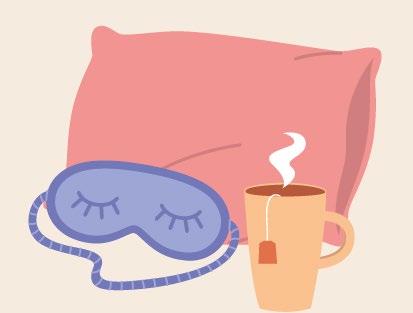
Continued from page 17 18
Blue Recruit

Instantly manage, edit, delete and view vacancies









Filter role specifications


to
the
Tired of sitting through countless job applications?
and share new job vacancies directly from your Blue Stream Academy dashboard with Blue Recruit. Connect with top healthcare professionals who are looking for their next career opportunity on a secure ISO27001 certified platform and streamline your recruitment processes in no time.
more information on Blue Recruit
the Blue StreamNet platform, a member of the team at info@bluestreamacademy.com or 01773 822549 Taking the stress out of recruitment.
Struggling to find the time
manage
admin of your recruitment process?
Manage
For
or
Our built-in recruitment platform allows managers to: Post and customise job vacancies
Food, Glorious Food!
Looking for some tasty recipes to prepare for family and friends? You’ve come to the right place. Get ready to savour the taste of summer with our refreshing salads and no-bake delights!
No-Bake Key Lime Cheesecake

Serves 8 Time 25 mins (6 hours to set)
Directions
1. Melt the butter on a low heat, making sure it doesn’t boil.
2. Using the end of a rolling pin, finely crush the digestive biscuits. Combine them with the melted butter in a pan or mixing bowl, and mix well.
3. Once mixed, pour into a 8 or 9 inch pie dish and press down firmly to cover the surface of the dish and form a base. Then place your pie dish in the fridge to set.
4. In a large mixing bowl, whisk the cream cheese. Once this is smooth, add the lime juice and condensed milk and continue to whisk until it is well mixed.
5. Add 195ml of double cream and whisk for another 2 minutes or until the mixture is thick and creamy.
Ingredients
For the cheesecake
• 95g butter
• 200g digestive biscuits
• 200g full-fat cream cheese
• 95ml lime juice (preferably freshly squeezed)

• 195ml sweetened condensed milk
• 195ml double cream
For the topping
• Lime zest

• 195ml double cream
• Lime topping sauce
Nutritional Values per Serving

6. Remove your pie dish from the fridge and pour the mixture over the base. Smooth the top with a pallet knife or spatula, and return the dish to the fridge for 6–7 hours or overnight.
7. When it’s time to serve, whisk the other 195ml of double cream in a bowl until it is whipped.
8. Cover your pie with the whipped cream, and garnish with lime zest (adding some lime sauce if you like your cheesecake tangy!).
9. Cut into 8 pieces for a delicious summer treat!
20
Ingredients
For the salad
• 500g chicken breast (replace with Quorn for a vegetarian version)

• 2 tsp extra-virgin olive oil
• ½ tsp salt
• ½ tsp black pepper
• 250g cherry tomatoes

• 1 red onion
• 2 romaine lettuce hearts (chopped)
• 140g sweetcorn (drained)
For the dressing (optional)
• 3 tbsp barbecue sauce
• 3 tbsp Greek yoghurt
• 2 tbsp lime juice
• 1 tbsp olive oil

• 1 tbsp brown sugar
• ½ tsp salt
Nutritional Values per Serving

Super Simple BBQ Chicken Salad
Directions
1. Pre-heat the grill to medium/high, brush both sides of the chicken breast with olive oil (skip if using Quorn), and sprinkle with salt and pepper.
2. Grill the chicken on one side for 7–10 minutes and flip once (or follow cooking instructions if using Quorn). Use a sharp knife or skewer to check there is no pink meat and that the juices run clear.
3. Place the grilled chicken on a serving plate, cover, and let it cool for 5 minutes.

4. Halve the cherry tomatoes, and peel and dice the red onion.
5. In a large serving bowl, combine the romaine lettuce, cherry tomatoes, sweetcorn and red onion.



6. Once the chicken has cooled, chop into bite-sized pieces and add to your large serving bowl.
7. Using a smaller mixing bowl, make the dressing. Add the barbecue sauce, Greek yoghurt, lime juice, olive oil, brown sugar and salt, mixing well until all the ingredients are combined.
8. Pour the dressing over the salad, and toss to make sure it is coated. Serve and enjoy!

Serves 4 Time 30 mins
2 1 2 3 4 bluestreamacademy.com 21
Blue Stream News

Catch up with all things going on with #TeamBSA at Blue Stream HQ!
How’s 2023 treating you so far?
It’s been a while since we last caught up, so we thought it was the ideal time to let you know what’s been going on here at BSA HQ!
2022 ended on a high for #TeamBSA, as we continued our tradition of taking part in the Belper Shoebox Appeal by preparing and delivering festive gifts for local care home residents in our community. The residents loved their gifts, and #TeamBSA even took part in a festive singsong with them and their incredible carers!


The first half of 2023 has also been an exciting and busy time here at BSA HQ, as we’ve already seen the release of our Anticoagulation Management, Supporting Personal Care and Hygiene, Evacuation Chair and Shared Decision-Making eLearning modules, alongside updates to our Display Screen Equipment module and the Infection Control (Levels 1 and 2) modules.
Like what you see? Follow us on Twitter at @BlueStreamNews for the latest updates from #TeamBSA!




Our Software Development team has also been working on a brand new 2-Factor Authentication feature, giving your Blue Stream Academy account an added layer of protection.

A busy few months lie ahead, as we prepare for upcoming events and exhibitions. Take a look at our calendar to see if we’re attending an event near you! Will we see you there?

22
Santa and the shoeboxes for the Belper Shoebox Appeal
International Accounts & Office Manager, Natalie, at a conference
Our Software Development team (L-R: Marcus, Craig, John. Anthony)
LiveChat Lounge
We’ve checked in with our enthusiastic support team to see what questions they’ve been answering in our LiveChat feature. Here’s one they shared with us for this issue:

Hi, Blue Stream!
I’ve seen that you offer the Care Certificate solution and I’d like to train some of my healthcare assistants up with this, but I’m not sure how to or how it works on Blue Stream.

Can you help?
Manager, East Midlands
Hi there!
Thank you for getting in touch with us!
The Care Certificate is made up of 15 standards that need to be completed: half theory, which are made up of Blue Stream Academy’s 15 eLearning modules, and half practical, which need to be assessed within the trainee’s organisation. Assessors can then upload evidence of the practical elements onto the trainee’s Care Certificate profile on Blue Stream Academy.
Your account manager can set up the Care Certificate solution for you, and our team of national trainers offers complimentary training sessions to make sure you know everything about the solution so you can train and support your team with ease!

The Care Certificate is an additional feature of the Blue StreamNet platform, meaning that it is available at an added cost for each trainee licence.
We hope this helps. If you need any further assistance, you can contact us by email, LiveChat or over the phone.
Thanks!
#TeamBSA
We’re pleased to announce that #TeamBSA will be attending the following events – if you see us, be sure to say hi!
We want to hear from you!
Are you a health, care or well-being writer wanting to spread the word about your area of expertise?
Get in touch with the BSA Today team to find out how you could be included in a future issue, and increase your message awareness through a network of over 1/4 of a million health and care professionals!

bsatoday@bluestreamacademy.com
01773 822549

bluestreamacademy.com 23 September Ambulance Leadership Forum Celtic Manor Resort Usk Valley, Chepstow Road, Newport, NP18 1HQ 2 3 OCT October
Events Calendar
Q A
The Care Show NEC Birmingham – Hall 3 Pendigo Way, Marsten Green, Birmingham, B40 1NT 11 12 OCT MORE INFO Best Practice
Birmingham – Hall 4 Pendigo Way, Marsten Green, Birmingham, B40 1NT 11 12 OCT MORE INFO MORE INFO
County Council Care Event
Education and Enterprise Park
Road,
ST18 0BF 21 SEP MORE INFO Come and say hi !
NEC
Staffordshire
Stafford
Weston
Stafford,
The Blue StreamNet platform is ISO27001 certified, ensuring that your data is handled with the highest level of security.


Over 95% of Blue Stream Academy customers renew their subscription year-on-year.



Each of the 120+ Blue Stream Academy eLearning modules are CPD-accredited.


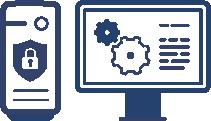



 Blue Library eLearning
Blue People HR System
Blue Voice Discussion Forum
Blue Recruit Vacancy System
Blue Check DBS System
Blue Connect Collaboration System
Blue Hub Management System
BSA Today Magazine
Blue Library eLearning
Blue People HR System
Blue Voice Discussion Forum
Blue Recruit Vacancy System
Blue Check DBS System
Blue Connect Collaboration System
Blue Hub Management System
BSA Today Magazine
01773 822549 info@bluestreamacademy.com LiveChat at bluestreamacademy.com
Care Certificate Paperless Solution











 Lauren Spencer | Content Developer at Blue Stream Academy
Lauren Spencer | Content Developer at Blue Stream Academy












































































































 Blue Library eLearning
Blue People HR System
Blue Voice Discussion Forum
Blue Recruit Vacancy System
Blue Check DBS System
Blue Connect Collaboration System
Blue Hub Management System
BSA Today Magazine
Blue Library eLearning
Blue People HR System
Blue Voice Discussion Forum
Blue Recruit Vacancy System
Blue Check DBS System
Blue Connect Collaboration System
Blue Hub Management System
BSA Today Magazine







